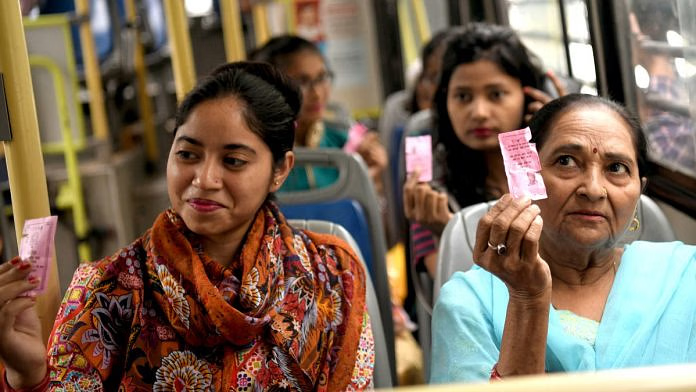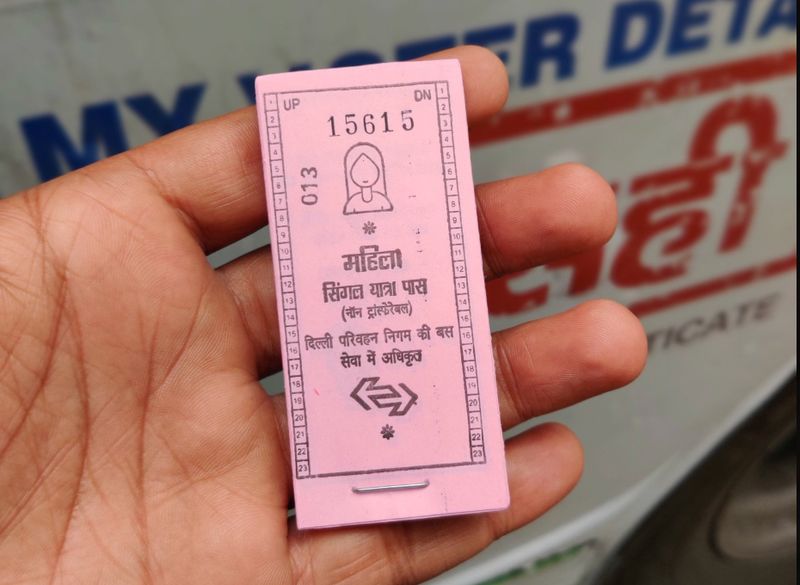
Urban transport systems are often portrayed as efficient and affordable, yet the lived reality of many users tells a different story. Planners typically design services around the needs of an able-bodied male commuter, overlooking women, LGBTQ+ persons, people with disabilities, and the urban poor. Gautam Bhan (2019) describes this through the lens of “urban informality,” where ordinary residents build homes or livelihoods outside formal plans simply to access work. As urban policies continue to ignore these lived realities, large sections of the population, particularly women and marginalised groups, are effectively denied equitable access to the city. This bias in urban planning translates into real barriers that limit women’s mobility, deepen existing social hierarchies, and constrain economic participation.
Women’s travel patterns differ significantly from men’s, and the cost of this difference is high. Women often face an additional, unacknowledged “tax” for mobility, commonly referred to as the pink tax . This reflects both the monetary and non-monetary burdens of navigating transport systems that were never designed for them. Criado Perez (2019) notes that women globally perform nearly 75% of unpaid care work, which forces them to combine multiple errands in a single trip. However, transport planning generally accounts only for point-to-point work commutes, ignoring this trip-chaining behaviour. The outcome is an invisible surcharge on women’s travel, through higher fares, longer or more complex routes, and persistent safety concerns that remain unaccounted for in transport budgets. In essence, women pay more in time, money, and emotional energy because mobility systems fail to reflect their lived realities.
This is not an individual problem but a systemic one. Urban transport models were built around a single destination, single-purpose commute – one that aligns with a male archetype. Studies confirm that women take multiple shorter or circuitous routes rather than direct ones, often using several modes of transit and incurring higher costs. For instance, women in Delhi spend 1.5–2 extra hours daily on unpaid work, shaping when and how they travel, often through added costs or multiple modes (Jagori, 2021). Globally, this reflects how planners, by treating men’s travel as the default, inadvertently devalue women’s mobility. City design, therefore, constrains women’s movement by default, a reflection of structural bias in how cities are planned.
Several Indian states have begun addressing these biases by introducing free or subsidised public transport for women. Delhi’s Pink Ticket scheme (2019) and Tamil Nadu’s zero-fare bus plan (2021) are notable examples. While critics frame these as fiscal burdens, evidence points to broader economic and social benefits. These schemes allow women to redirect saved fare money to essential expenses such as healthcare, education, and savings. Surveys show that 88% of women in Delhi reported using buses more frequently after the free-fare policy was introduced, and 87% no longer had to walk long distances. Around 75% saw a reduction in monthly transport costs, and two-thirds now spend under ₹1,000 per month on travel. Over half of the respondents reported using the savings for household needs, while 15% spent more on healthcare or education (Greenpeace India, 2024). In this way, fare-free transport functions as an income support measure for low-income women rather than merely a public subsidy.
The mobility impact has also been significant. A 2023 World Bank study found that 28% of women in Delhi considered the free bus pass critical to finding or retaining a job. According to Greenpeace India (2024), one in four women riders began using buses regularly only after the scheme was launched. In Tamil Nadu, audits show increased bus use for visits to family, healthcare, and recreation (Safetipin, 2022). Women without access to private vehicles, cars or two-wheelers, now have reliable public alternatives. This suggests potential long-term reductions in private vehicle use and related emissions. Free-fare schemes, therefore, act not just as welfare measures but as strategic investments in gender equity, sustainable mobility, and environmental health.
However, affordability alone does not ensure access. Delhi’s dense transport network still faces issues of last-mile connectivity and congestion, while Tamil Nadu’s extensive routes struggle with inconsistent service quality and lack of female staff (Narayanan, 2023). In rural or peri-urban areas, a free bus serves little purpose if the service is infrequent or stops are unsafe. The concept of inclusion thus varies by context—but all examples show that fare-free transport can expand women’s participation in both economic and social life.

Service quality remains a critical factor. In Delhi, a survey of college students (Safetipin, 2023) found that 38% lacked real-time information on bus arrivals, while 57% reported that buses were overcrowded or irregular, problems free fares alone cannot fix. Safetipin audits in Chennai and other cities show that over 60% of bus stops lack adequate lighting, and many sidewalks are blocked or broken, making even a free ride unsafe. The presence of female drivers and conductors also enhances perceptions of safety, yet such representation remains minimal. These gaps highlight the need for a comprehensive approach that combines fare relief with better infrastructure, safety, and staffing.
Ultimately, fare-free transport is not just a matter of affordability, it is about reclaiming access to public space for those historically excluded from it. For these initiatives to be sustainable, infrastructure must align with intent. Access without safety, reliability, or dignity does not equal inclusion. When integrated into long-term mobility planning that centres care, equity, and usability, fare-free transport can reshape how cities function, advancing both gender justice and sustainable urban development.
This article is contributed by Safetipin on behalf of Women on the Move Asia.
Founded in 2021, the Women on the Move Asia network unites inspiring women from a variety of countries and backgrounds. By facilitating exchange among female transport experts, the network aims to raise awareness of the issues women face in the sector and develop solutions for these issues.
Become a Network member by joining our LinkedIn Group: Women on the Move: Transforming Transport in Asia | Groups | LinkedIn
 Indian cities empower women's mobility with pink tickets free of charge. ©Atishi Marlena
Indian cities empower women's mobility with pink tickets free of charge. ©Atishi Marlena

Moniska Rao
monishkarao38@gmail.com